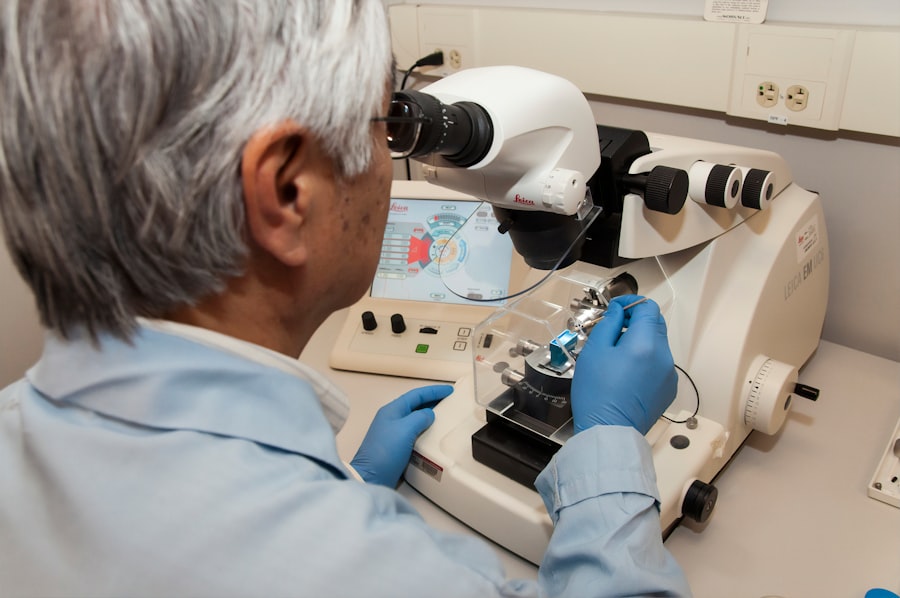Phase three clinical trials represent a pivotal stage in the drug development process, serving as a bridge between the laboratory and the marketplace. These trials are designed to assess the efficacy and safety of a new treatment in a larger population, typically involving hundreds to thousands of participants. By this stage, the drug has already undergone rigorous testing in earlier phases, which focused on safety and dosage.
Phase three trials are crucial for determining whether the benefits of a new treatment outweigh its risks in a broader context, thus providing essential data for regulatory approval. The design of phase three trials is often randomized and controlled, meaning that participants are assigned to either the treatment group or a control group, which may receive a placebo or an existing standard treatment. This methodology helps to eliminate bias and ensures that the results are attributable to the drug being tested rather than external factors.
The outcomes measured in these trials can include not only the primary efficacy endpoints but also secondary endpoints that provide additional insights into the drug’s performance and its impact on patients’ quality of life.
Key Takeaways
- Phase Three clinical trials are critical for confirming drug efficacy and safety before approval.
- Patient participation is essential, with strict criteria ensuring appropriate candidate selection.
- Ethical standards guide the conduct of Phase Three trials to protect patient rights and well-being.
- Challenges include managing risks, large participant numbers, and complex logistics.
- Innovations in trial design and technology are shaping the future of Phase Three clinical research.
Importance of Phase Three Clinical Trials in Drug Development
Phase three clinical trials are critical for several reasons. First and foremost, they provide the necessary evidence to support regulatory submissions for new drugs. Regulatory agencies such as the U.S.
Food and Drug Administration (FDA) or the European Medicines Agency (EMA) require robust data from phase three trials to evaluate whether a drug is safe and effective for public use. The outcomes of these trials can significantly influence the approval process, determining whether a drug can be marketed and made available to patients. Moreover, phase three trials often involve diverse populations, which helps to ensure that the findings are generalizable across different demographics.
This inclusivity is vital for understanding how various factors—such as age, gender, ethnicity, and comorbidities—can affect treatment outcomes. By capturing this diversity, researchers can identify potential variations in efficacy and safety, leading to more personalized treatment approaches in clinical practice. The insights gained from these trials can also inform future research directions and help refine treatment protocols.
Criteria for Participating in Phase Three Clinical Trials

Participation in phase three clinical trials is governed by specific eligibility criteria designed to ensure that the study population is appropriate for the research question being addressed. These criteria typically include factors such as age, sex, medical history, and current health status. For instance, a trial investigating a new cancer therapy may require participants to have a confirmed diagnosis of a specific type of cancer and may exclude individuals with certain comorbid conditions that could confound results.
In addition to medical criteria, researchers often consider logistical factors such as geographic location and willingness to comply with study protocols. Participants may need to attend multiple visits over an extended period, which can be a barrier for some individuals. Furthermore, informed consent is a critical component of participation; potential participants must be fully aware of the trial’s purpose, procedures, risks, and benefits before agreeing to take part.
This process ensures that individuals make informed decisions about their involvement in research.
The Role of Patients in Phase Three Clinical Trials
| Metric | Description | Typical Values/Range | Importance in Phase Three Trials |
|---|---|---|---|
| Number of Participants | Total patients enrolled in the trial | 300 – 3,000+ | Ensures statistical power to detect treatment effects |
| Patient Diversity | Representation across age, gender, ethnicity, and comorbidities | Varies by trial; aim for broad representation | Improves generalizability of results to wider population |
| Adherence Rate | Percentage of patients following the treatment protocol | Typically 70% – 95% | Critical for accurate assessment of treatment efficacy |
| Retention Rate | Percentage of patients completing the trial | Usually 80% – 95% | Reduces bias and maintains study validity |
| Adverse Event Reporting | Frequency and severity of side effects reported by patients | Varies widely depending on treatment | Essential for evaluating safety profile |
| Patient-Reported Outcomes (PROs) | Data on symptoms, quality of life, and treatment satisfaction | Collected via validated questionnaires | Provides insight into treatment impact from patient perspective |
| Informed Consent Rate | Percentage of eligible patients who agree to participate | Varies; often 50% – 80% | Reflects patient willingness and ethical recruitment |
Patients play an integral role in phase three clinical trials, not only as participants but also as partners in the research process. Their involvement is essential for generating data that reflects real-world experiences and outcomes. By participating in these trials, patients contribute to advancing medical knowledge and improving treatment options for future patients.
Their feedback can also help researchers understand how a new treatment affects daily life, which is crucial for assessing overall quality of life. Moreover, patient advocacy groups have increasingly become involved in the design and implementation of clinical trials. These organizations often work alongside researchers to ensure that patient perspectives are considered throughout the trial process.
This collaboration can lead to more patient-centered trial designs that prioritize outcomes that matter most to patients, such as symptom relief and functional improvement. Engaging patients in this way not only enhances the relevance of the research but also fosters trust between the medical community and those it serves.
Ethical Considerations in Phase Three Clinical Trials
Ethical considerations are paramount in phase three clinical trials, given the potential risks involved for participants. Researchers must adhere to strict ethical guidelines to protect participants’ rights and well-being throughout the study. Informed consent is a cornerstone of ethical research practice; participants must be fully informed about the nature of the trial, including any potential risks and benefits associated with participation.
This transparency is essential for ensuring that individuals can make autonomous decisions about their involvement. Additionally, ethical oversight is provided by Institutional Review Boards (IRBs) or Ethics Committees (ECs), which review study protocols to ensure that they meet ethical standards. These bodies assess factors such as risk minimization, equitable selection of participants, and provisions for monitoring participant safety throughout the trial.
Researchers must also be prepared to address any adverse events that occur during the study promptly. The ethical obligation to prioritize participant safety extends beyond informed consent; it encompasses ongoing monitoring and support throughout the trial duration.
Challenges and Risks in Conducting Phase Three Clinical Trials

Conducting phase three clinical trials presents numerous challenges and risks that can impact both the research process and participant safety. One significant challenge is recruitment; finding enough eligible participants who are willing to enroll can be difficult, particularly for studies involving rare diseases or specific populations. Delays in recruitment can prolong trial timelines and increase costs, potentially jeopardizing funding and resources.
Another challenge lies in maintaining participant retention throughout the trial duration. Participants may drop out for various reasons, including adverse effects from the treatment or logistical issues related to trial visits. High dropout rates can compromise the integrity of trial results and lead to biased conclusions if not properly managed.
Researchers must implement strategies to enhance participant engagement and support throughout the study, such as regular communication and addressing concerns promptly.
Success Stories and Breakthroughs from Phase Three Clinical Trials
Phase three clinical trials have been instrumental in bringing groundbreaking therapies to market that have transformed patient care across various medical fields. One notable success story is that of trastuzumab (Herceptin), a monoclonal antibody used to treat HER2-positive breast cancer. The results from phase three trials demonstrated significant improvements in survival rates among patients receiving trastuzumab compared to those receiving standard chemotherapy alone.
This breakthrough not only changed treatment paradigms but also underscored the importance of targeted therapies in oncology. Another remarkable example is the development of direct-acting antiviral agents for hepatitis C virus (HCV) infection. Phase three trials evaluating drugs like sofosbuvir led to cure rates exceeding 90% among treated patients, revolutionizing HCV management.
These advancements have had profound implications for public health, reducing morbidity associated with chronic hepatitis C and decreasing transmission rates within communities.
Future of Phase Three Clinical Trials: Innovations and Advancements
The future of phase three clinical trials is poised for significant transformation driven by technological advancements and innovative methodologies. One promising development is the integration of digital health technologies into trial designs. Wearable devices and mobile health applications can facilitate real-time data collection on patient outcomes, adherence, and adverse events outside traditional clinical settings.
This approach not only enhances data richness but also allows for more flexible trial designs that accommodate participants’ lifestyles. Additionally, adaptive trial designs are gaining traction in phase three studies. These designs allow researchers to modify aspects of the trial based on interim results without compromising scientific integrity.
For instance, if early data indicate that a particular dosage is more effective than others, researchers can adjust dosing regimens accordingly while still adhering to regulatory requirements. Such flexibility can expedite drug development timelines and improve patient outcomes by ensuring that only the most effective treatments are pursued. As we look ahead, it is clear that phase three clinical trials will continue to evolve in response to emerging scientific knowledge and technological innovations.
The integration of patient perspectives into trial design will further enhance relevance and applicability, ultimately leading to more effective treatments that address unmet medical needs across diverse populations.




